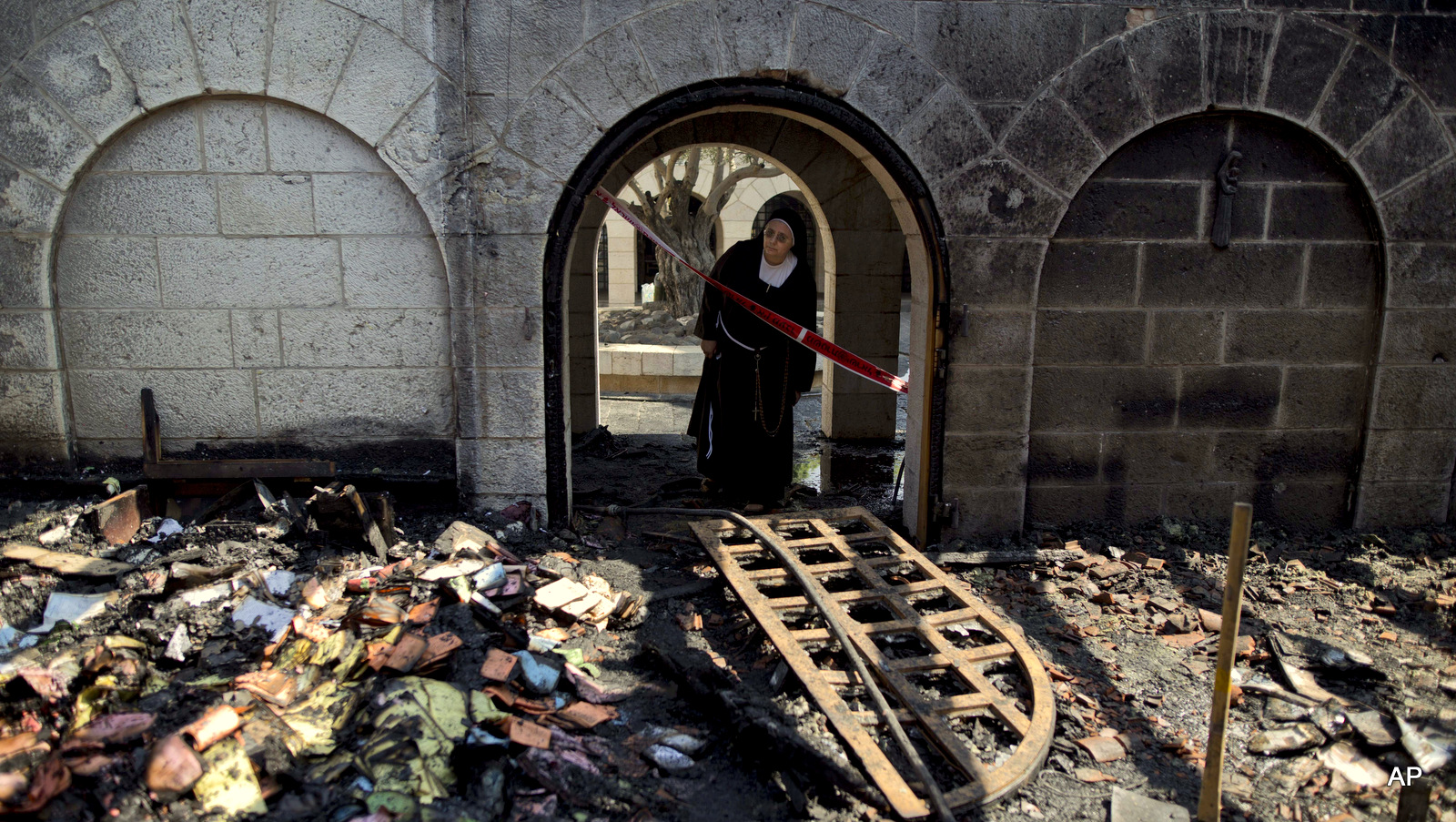Church of the Multiplication
The multiplication of the loaves church is located in the western part of Tabgha on the Sea of Galilee and is according to the Gospel of Matthew (Matthew 14.13 to 21 EU) as the place where " The Feeding of the Five Thousand" took place. Two predecessors originated in the 4th and 5th centuries. 1888 acquired the German Catholic Mission of Palestine the terrain. 1892 began the first archaeological investigation. Further excavations took place in 1932. This mosaic floors of the 4th and 5th century were discovered. By 1936, the mosaics were uncovered and overbuilt to protect with a temporary church.
Today, the Byzantine-style church building modeled with vorgelagertem atrium and narthex was built in 1980-1982 by the Cologne architect Anton Goergen and Fritz Baumann on the foundations of the 5th century; places the old black basalt walls are still visible. The bright stones for the church come from Taiyiba, a predominantly Christian village, on the road from Jericho to Ramallah. The open roof is from Germany and the red tiles from Italy. The portal of the church was designed by the German sculptor Elmar Hillebrand.
The mosaics
The entire complex multiplication of the loaves church was originally designed with mosaics. These mosaics from the second Byzantine structure are obtained. The floor structure consists primarily of fist-sized stones, on which a layer of coarse gravel mortar ( Rudu ) was applied and was coated with a fine layer of coarse lime mortar. The mosaic cubes are made Missikalksteinen in the color spectrum from blue black to white. Just Blue and Green absent. The mosaics come from different time periods. Of particular artistic quality are the views of waterfowl and marsh plants in the aisles and in the transept. Very well known is the mosaic on the altar, a basket of four breads (the fifth bread is the bread used in the Eucharist on the altar ) and two fish left and right shows it. The motif is often found on colorful ceramic dishes and plates for tourists. The stone under the altar is especially revered as the site on which Jesus is said to have placed before the multiplication of the loaves, the loaves and fishes. The mosaics of the church date back to the middle of the 4th century, the famous Bread and Fish Mosaic shall be dated as latest mosaic probably referring to the incipient 5th century.










